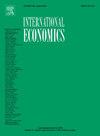Debt relief instruments and external debt dynamics following natural disasters in developing countries
引用次数: 0
Abstract
This paper examines the effectiveness of debt relief in shaping external debt dynamics in the aftermath of large-scale natural disasters. Using a sample of 74 developing countries over the period 1990–2018, the empirical results reveal significant increase in debt stocks following high-intensity natural disasters. This accumulation is particularly pronounced in low-income countries, while the effects observed in upper-middle-income countries depend on the severity of the disasters. The analysis shows that initiatives aimed at restructuring public debt, such as agreements among official creditors, play an effective role in restoring debt sustainability after natural disasters, provided that a reduction in the nominal amount of debt is granted. Similarly, the study highlights the critical need to reschedule debts after natural disasters. Net Present Value (NPV)-based strategies implemented immediately post-disaster – particularly those involving maturity extensions – prove essential for absorbing near-term liquidity shocks while stabilizing debt trajectories when face value reductions are unavailable. By contrast, official development assistance (ODA) has only a limited impact on mitigating debt accumulation resulting from high-intensity disasters. Finally, the results suggest that countries engaging in preventive restructuring negotiations with private creditors benefit from more favorable conditions in the short term, without jeopardizing access to new financing sources.
发展中国家自然灾害后的债务减免工具和外债动态
本文考察了大规模自然灾害后债务减免在形成外债动态方面的有效性。利用1990年至2018年期间74个发展中国家的样本,实证结果显示,高强度自然灾害后债务存量显著增加。这种积累在低收入国家尤为明显,而在中高收入国家所观察到的影响则取决于灾害的严重程度。分析表明,旨在调整公共债务结构的倡议,例如官方债权人之间的协定,在自然灾害后恢复债务的可持续性方面发挥了有效作用,但必须减少名义上的债务数额。同样,该研究强调了自然灾害后重新安排债务的迫切需要。事实证明,灾后立即实施的基于净现值(NPV)的战略,特别是涉及延期的战略,对于吸收短期流动性冲击,同时在无法减少面值的情况下稳定债务轨迹至关重要。相比之下,官方发展援助对减轻高强度灾害造成的债务积累的影响有限。最后,结果表明,与私人债权人进行预防性重组谈判的国家在短期内受益于更有利的条件,而不会危及获得新的融资来源。
本文章由计算机程序翻译,如有差异,请以英文原文为准。
求助全文
约1分钟内获得全文
求助全文
来源期刊

International Economics
Economics, Econometrics and Finance-Economics, Econometrics and Finance (all)
CiteScore
6.30
自引率
0.00%
发文量
74
审稿时长
71 days
 求助内容:
求助内容: 应助结果提醒方式:
应助结果提醒方式:


